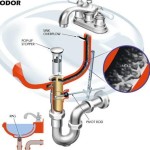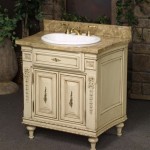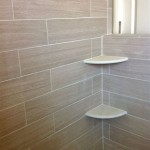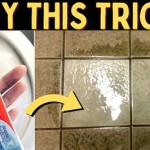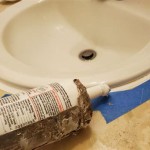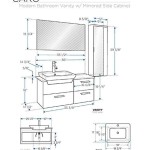How to Effectively Remove Mold Around Bathroom Sink
Mold, a common culprit in bathrooms, not only detracts from the aesthetics of your space but also poses potential health risks. However, with the right approach, mold around your bathroom sink can be effectively eliminated, restoring its pristine condition.
1. Safety First: Put on Protective Gear
Before tackling the mold, don protective gear to safeguard your health. Wear gloves to prevent skin contact, a face mask to avoid inhaling spores, and eye goggles to shield your eyes from harmful particles.
2. Ventilation is Key: Open Doors and Windows
Ensure adequate ventilation by opening windows and doors. This allows fresh air to circulate, diluting the concentration of mold spores and reducing the risk of inhalation.
3. Identify the Underlying Cause
To prevent mold from recurring, it's crucial to address the underlying cause. Check for leaks around pipes, faucets, or the sink base. If present, repair them promptly to eliminate moisture sources.
4. Cleaning Solutions: Commercial vs. Natural
You can opt for commercially available mold-killing solutions or utilize natural options. Commercial products typically contain harsh chemicals that effectively eliminate mold, while natural alternatives, such as white vinegar or tea tree oil, offer non-toxic but less potent options.
5. Application and Scrubbing
Apply the chosen cleaning solution liberally to the moldy area. Let it dwell for the recommended time (as indicated on the product label or as suggested for natural remedies) to penetrate and kill the mold. Use a stiff-bristled brush to gently scrub the affected surface, dislodging the mold.
6. Rinsing and Drying
Once the mold is removed, rinse the area thoroughly with clean water to eliminate any residual cleaner or dead mold particles. Use a dry cloth or paper towels to absorb excess moisture and promote drying.
7. Prevention: Moisture Control and Regular Cleaning
To prevent mold from recurring, implement moisture control measures. Ensure the bathroom is well-ventilated after showers or baths by using an exhaust fan or opening a window. Regularly clean the sink, faucets, and floor to eliminate moisture and potential mold growth.
Additional Tips:
- If mold growth is extensive or you have respiratory concerns, consider consulting a professional mold remediation specialist.
- Test certain surfaces for mold growth using a mold test kit, which can provide valuable insights into the extent of the issue.
- To enhance the effectiveness of cleaning solutions, consider combining them with baking soda or hydrogen peroxide (test on an inconspicuous area first to ensure compatibility).
By following these steps and implementing preventive measures, you can successfully remove mold around your bathroom sink, ensuring a clean, healthy, and aesthetically pleasing space.

Easy Way To Clean Moldy Caulk And Keep It That Checking In With Chelsea

The Ultimate Guide On How To Clean And Get Rid Of Mold Pro Housekeepers

How To Clean Mold In Bathroom Basin

Signs That You Have Mold In Your Water Pipes

Moldy Smelling Water From Bathroom Faucet Hometalk

Bathroom Mold How To Kill On Ceiling

What To Do When The Bathroom Sink Smells Like Mildew Mold Smell

What Causes Black Mold In Sink Drains How To Get Rid Of It

Does Hydrogen Peroxide Kill Mold What Works And Doesn T

Help I Have Mold In My Bathroom Behind The Vanity Prs

